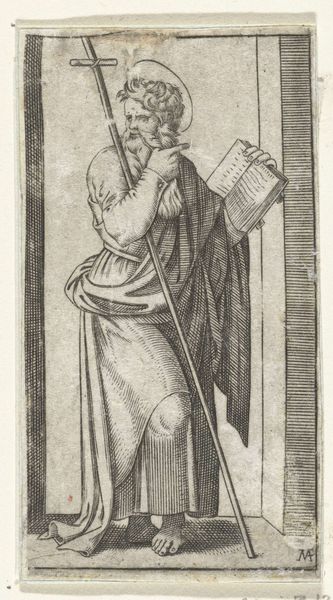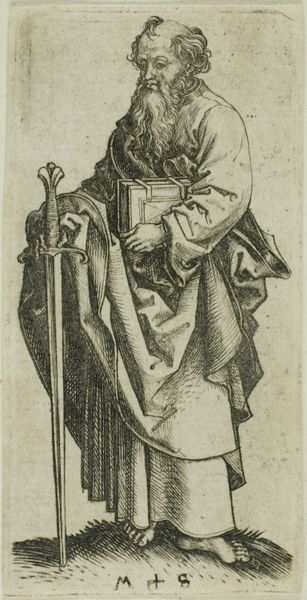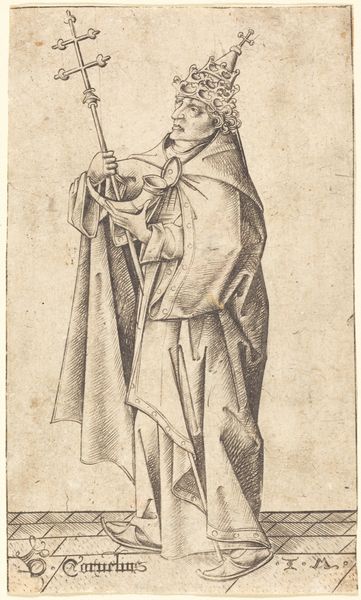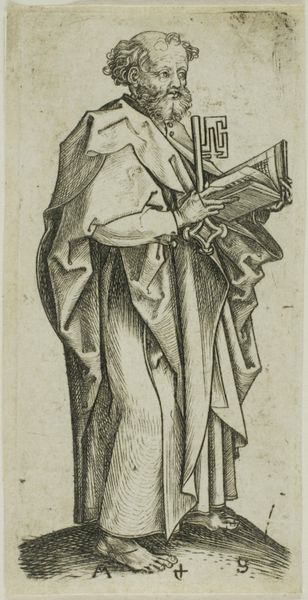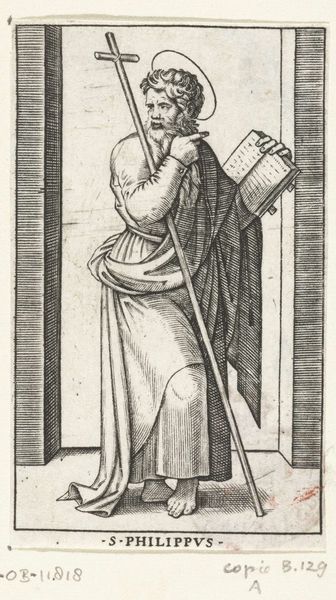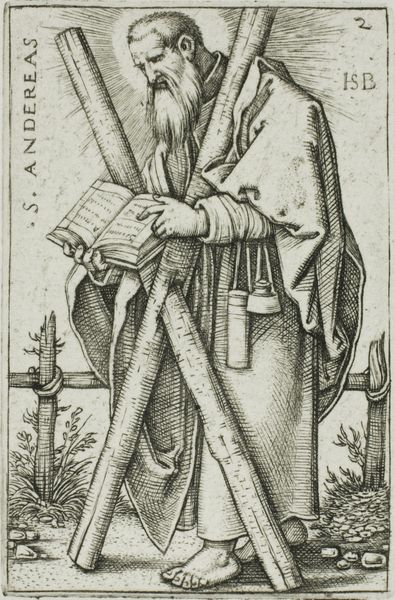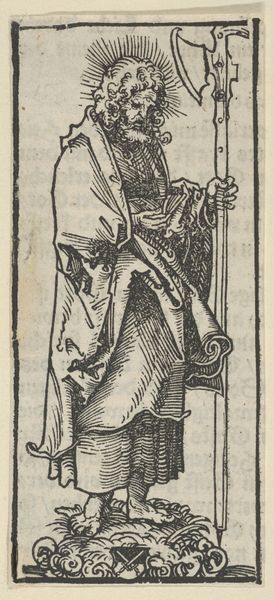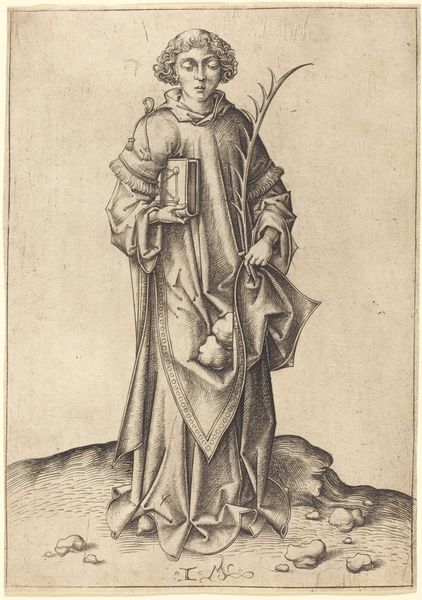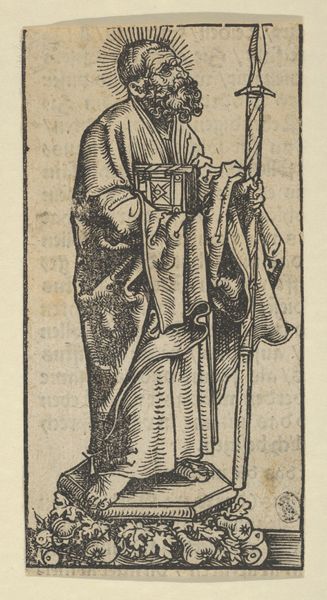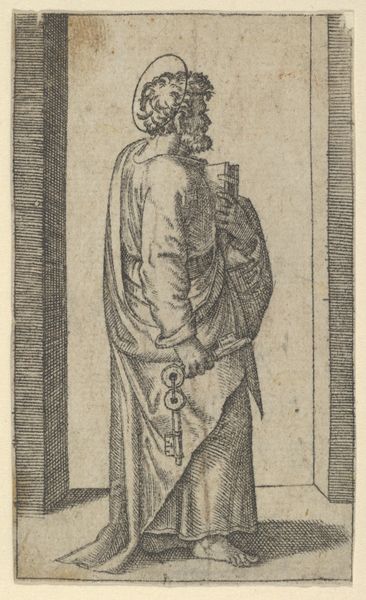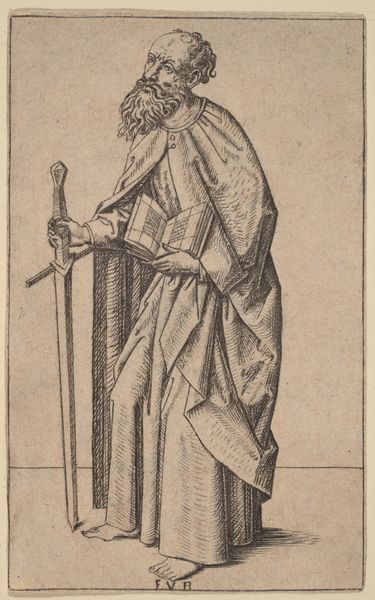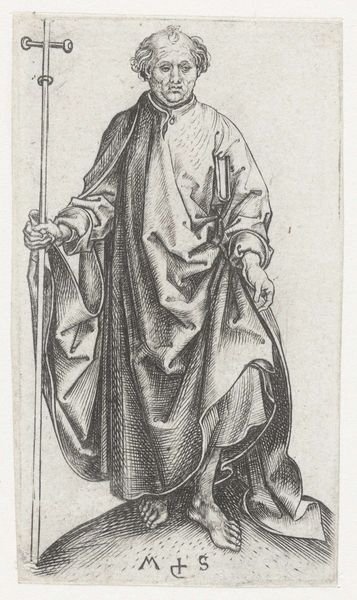
drawing, print, paper, ink, engraving
#
portrait
#
drawing
#
medieval
# print
#
figuration
#
paper
#
ink
#
line
#
history-painting
#
northern-renaissance
#
engraving
Copyright: National Gallery of Art: CC0 1.0
Curator: Israhel van Meckenem’s engraving, Saint Dominic, likely created around 1470, gives us a fascinating glimpse into late medieval artistic conventions and the construction of religious authority. Editor: My immediate reaction is the striking contrast of textures! The saint's smooth face against the heavily draped robes, the detailed floor against the blank background...it's a study in contrasts, really. And the little dog with the torch—is that a dog chewing on a torch? Curator: Yes, it is, and that’s precisely where iconography helps us. That dog represents a key aspect of the Dominican order—Dominicans were often referred to as the "Domini canes," the "dogs of the Lord." They were seen as watchdogs against heresy. The flaming torch it carries symbolizes their burning zeal for faith. Editor: Fascinating! So, it’s about symbolism embedded in an emotionally appealing scene? What interests me is how this symbolism would play out for the 15th-century observer versus now. It almost feels... cheeky. The line work, so precise, almost gives it a contemporary illustrative vibe. Curator: Context, as always, is crucial. The late medieval period saw a rise in printmaking. These engravings made images of saints and religious figures more accessible. Saint Dominic here isn’t just a religious icon, he’s a carefully constructed image designed to communicate the values and authority of the Dominican order to a wider audience. Note how he holds a book, referring to his order’s emphasis on learning and preaching, as a form of empowerment and a visual statement during a time of growing social unrest and challenging the Catholic Church’s doctrine. Editor: That book and his stern face carry an imposing weight now that you mention that social tension. He appears to know something the viewer doesn't, something requiring vigilance. And what about that staff? Curator: Symbol of leadership and spiritual guidance. So he’s armed to combat heresy by education. Looking at the style and composition of Saint Dominic through a gendered lens raises critical questions about performative masculinity within the church. We have to address questions of who has historically held power, and what power dynamics might be in play by virtue of this man carrying himself this way. Editor: All this really underscores the lasting power of images and the subtle yet powerful ways they shape belief. What’s most intriguing for me is the seamless melding of those symbols that continue to inform a visual dialogue spanning across generations. Curator: Absolutely. Approaching this piece, with this intersectional knowledge is fundamental for engaging critically with representations of religious authority in art, even centuries later.
Comments
No comments
Be the first to comment and join the conversation on the ultimate creative platform.
